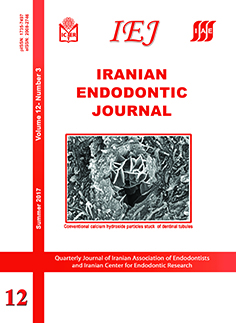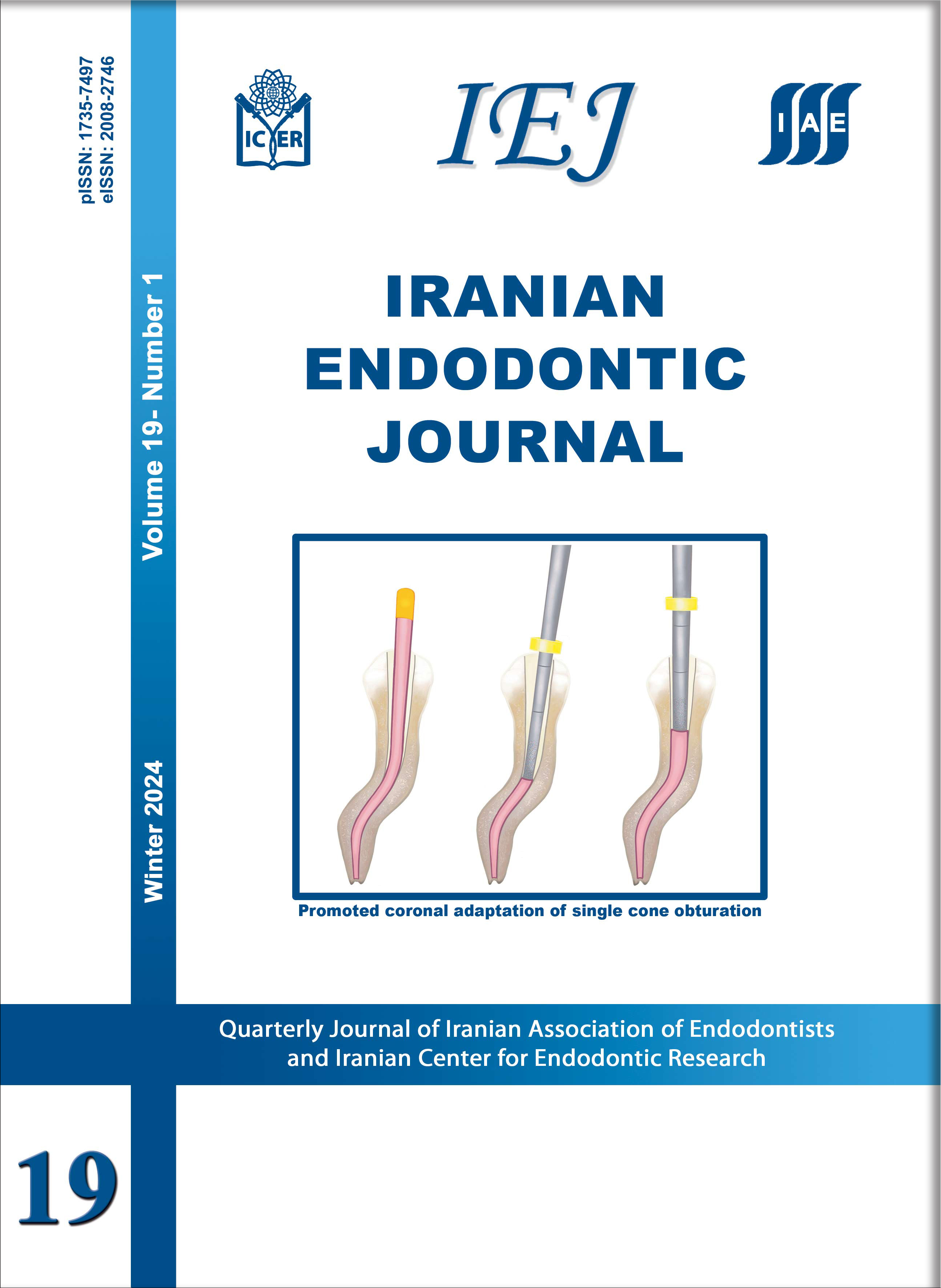Temperature Rises in the Pulp Chamber with Different Techniques of Orthodontic Adhesive Removal
Iranian Endodontic Journal,
Vol. 12 No. 3 (2017),
2 July 2017
,
Page 338-342
https://doi.org/10.22037/iej.v12i3.16635
Abstract
Introduction: The aim of this in vitro study was to compare the temperature rises in the pulp chamber and time spent with different techniques for orthodontic resin adhesive removal. Methods and Materials: Adhesive removal was performed in 20 extracted human maxillary second premolars with five techniques: high-speed tungsten carbide burs with water-cooling (BurH-cool) and without cooling (BurH), low-speed carbide burs (BurL), low-speed aluminum-oxide discs (DiscL), and low-speed fiberglass burs (BurFGL). Pulp chamber temperature was measured with a thermocouple probe and time spent was recorded with a digital stopwatch. Comparisons of temperature rise and time between the techniques were performed with Analysis of variance and Tukey’s Honestly test. Correlation between variables was investigated with Pearson’s correlation coefficient. Results: Temperature rise and time were statistically different between techniques and showed a positive correlation between them (r=0.826) (P<0.01). BurH-cool provoked the lowest temperature rise and BurFGL the highest (P<0.01). Temperature rises were higher with DiscL than with BurH and BurL (P<0.01), which showed no statistical differences between them (P>0.05). The fastest technique was BurH-cool followed by BurL, BurH, DiscL and BurFGL (P<0.01). Conclusion: BurH-cool, BurH and BurL are safe adhesive removal techniques, whereas DiscL and BurFGL may damage pulp tissues. Time spent on adhesive removal has direct effect on temperature rise in the pulp chamber.
Keywords: Enamel Clean-Up; Pulp Chamber; Pulp Temperature; Temperature Rise
How to Cite
- Abstract Viewed: 825 times
- PDF Downloaded: 698 times




